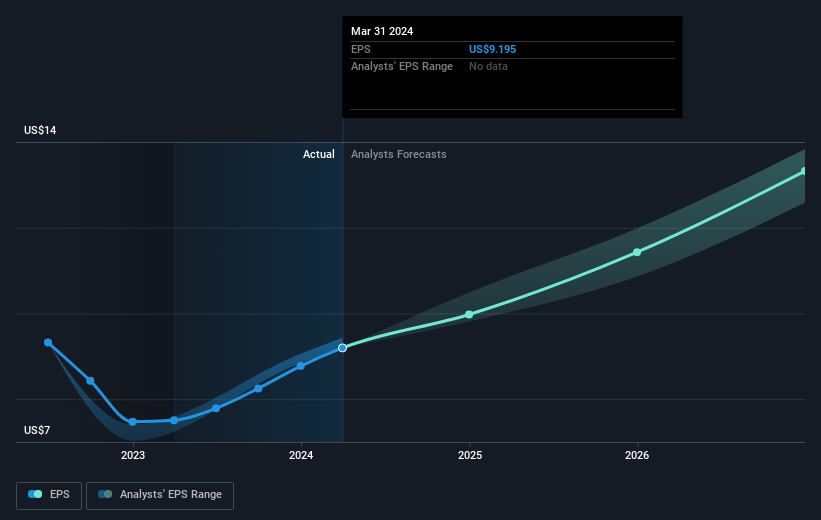Sports
Investing in Moody’s (NYSE:MCO) five years ago would have delivered you a 126% gain

The most you can lose on any stock (assuming you don’t use leverage) is 100% of your money. But on a lighter note, a good company can see its share price rise well over 100%. One great example is Moody’s Corporation (NYSE:MCO) which saw its share price drive 116% higher over five years. Meanwhile the share price is 2.9% higher than it was a week ago.
So let’s assess the underlying fundamentals over the last 5 years and see if they’ve moved in lock-step with shareholder returns.
View our latest analysis for Moody’s
To quote Buffett, ‘Ships will sail around the world but the Flat Earth Society will flourish. There will continue to be wide discrepancies between price and value in the marketplace…’ One imperfect but simple way to consider how the market perception of a company has shifted is to compare the change in the earnings per share (EPS) with the share price movement.
During five years of share price growth, Moody’s achieved compound earnings per share (EPS) growth of 6.1% per year. This EPS growth is lower than the 17% average annual increase in the share price. So it’s fair to assume the market has a higher opinion of the business than it did five years ago. That’s not necessarily surprising considering the five-year track record of earnings growth. This optimism is visible in its fairly high P/E ratio of 45.87.
You can see below how EPS has changed over time (discover the exact values by clicking on the image).
We know that Moody’s has improved its bottom line lately, but is it going to grow revenue? Check if analysts think Moody’s will grow revenue in the future.
What About Dividends?
When looking at investment returns, it is important to consider the difference between total shareholder return (TSR) and share price return. The TSR is a return calculation that accounts for the value of cash dividends (assuming that any dividend received was reinvested) and the calculated value of any discounted capital raisings and spin-offs. Arguably, the TSR gives a more comprehensive picture of the return generated by a stock. We note that for Moody’s the TSR over the last 5 years was 126%, which is better than the share price return mentioned above. This is largely a result of its dividend payments!
A Different Perspective
Moody’s’ TSR for the year was broadly in line with the market average, at 27%. That gain looks pretty satisfying, and it is even better than the five-year TSR of 18% per year. It is possible that management foresight will bring growth well into the future, even if the share price slows down. I find it very interesting to look at share price over the long term as a proxy for business performance. But to truly gain insight, we need to consider other information, too. To that end, you should be aware of the 1 warning sign we’ve spotted with Moody’s .
If you would prefer to check out another company — one with potentially superior financials — then do not miss this free list of companies that have proven they can grow earnings.
Please note, the market returns quoted in this article reflect the market weighted average returns of stocks that currently trade on American exchanges.
Have feedback on this article? Concerned about the content? Get in touch with us directly. Alternatively, email editorial-team (at) simplywallst.com.
This article by Simply Wall St is general in nature. We provide commentary based on historical data and analyst forecasts only using an unbiased methodology and our articles are not intended to be financial advice. It does not constitute a recommendation to buy or sell any stock, and does not take account of your objectives, or your financial situation. We aim to bring you long-term focused analysis driven by fundamental data. Note that our analysis may not factor in the latest price-sensitive company announcements or qualitative material. Simply Wall St has no position in any stocks mentioned.
Have feedback on this article? Concerned about the content? Get in touch with us directly. Alternatively, email editorial-team@simplywallst.com




